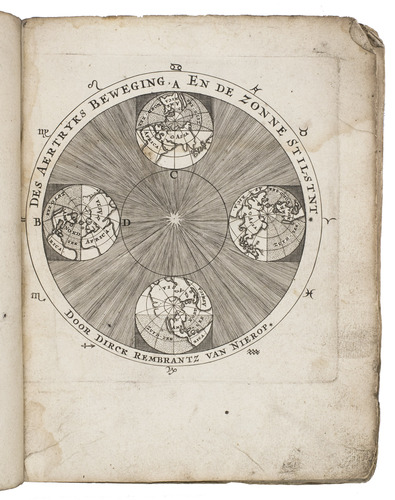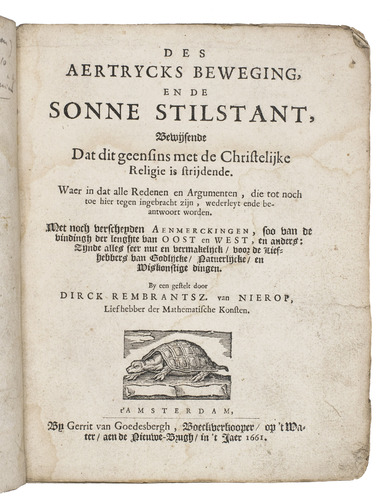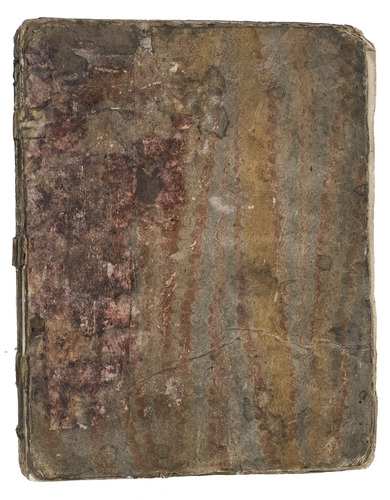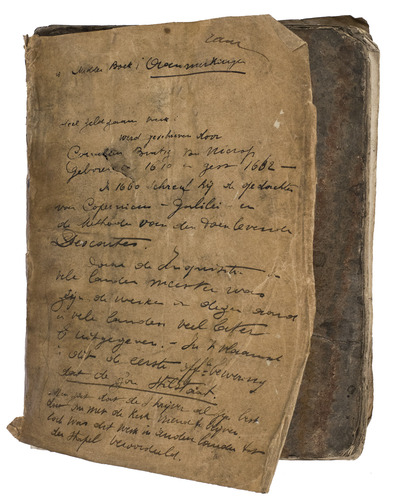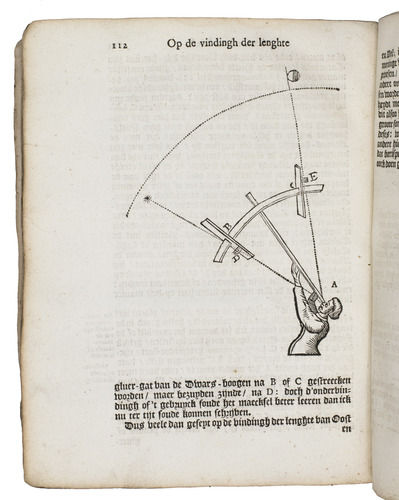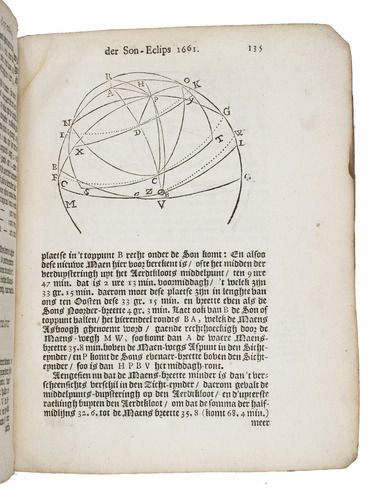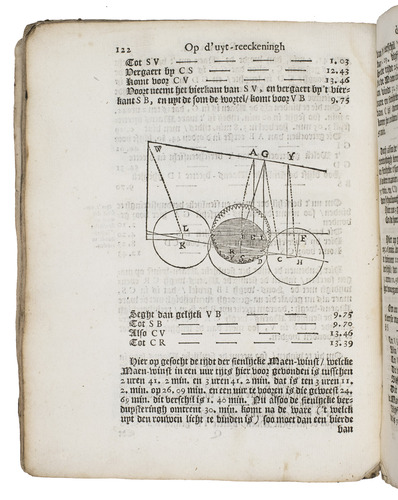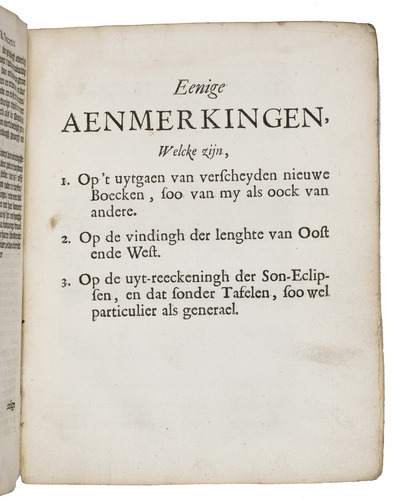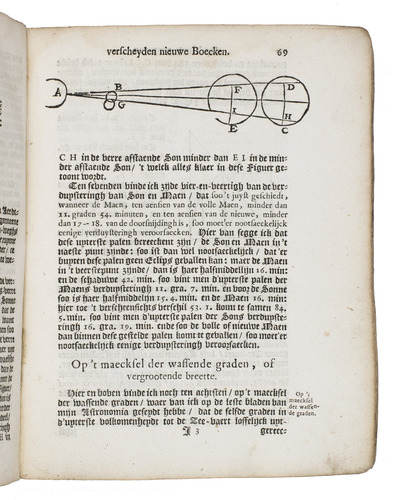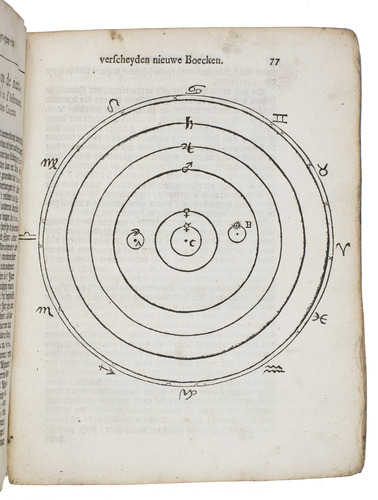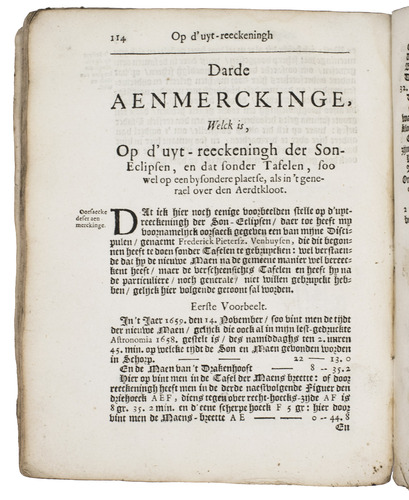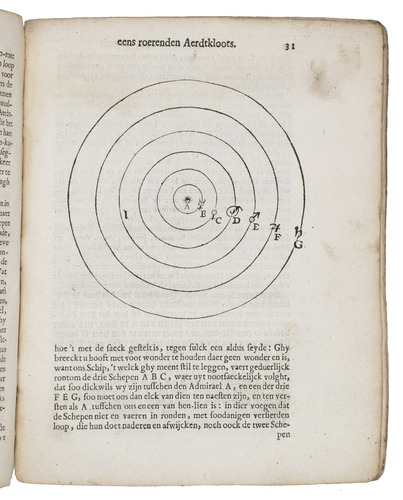NIEROP, Dirck Rembrantz. van.
Des aertryks beweging en de zonne stilstant, bewijsende dat dit geensins met de Christelijke religie is strijdende.
Amsterdam, Gerrit van Goedesbergh [colophon: printed by Tymon Houthaak], 1661. 4to. With an engraved frontispiece, showing how the earth revolves around the sun, 29 mathematical and astronomical woodcut illustrations in the text, 3 decorated woodcut initials, 2 woodcut tailpieces, and a woodcut printer's device of a turtle on the title-page. Contemporary marbled paper wrapppers, stitched on 3 vellum tapes. [8], 151, [5 blank] pp.
€ 4,500
First edition of a rare work about heliocentrism and solar eclipses, written during the time when heliocentrism was forbidden by the Catholic Church. The present work is an almost unknown work by the Mennonite mathematician, cartographer, and astronomer Dirck Rembrantsz van Nierop (1610-1682), as it is not mentioned in many of the most relevant reference works. It is also incredibly rare on the market, as we have only been able to trace it in two sales records of the past 100 years.
The geocentric model, or the idea that the universe revolves around the earth, was conceived by the Alexandrian astronomer Claudius Ptolemy (ca. 100-ca. 170 CE). Although he was not the first to come up with the idea, his model was the only mathematically sound one. The Catholic Church believed his work to be in agreement with the Bible and heavily promoted it, so geocentrism became the dominant model until the 16th century. In 1543, Nicolaus Copernicus (1473-1543) published De revolutionibus orbium coelstium, in which he successfully argued that the sun was actually the centre of the solar system. His publication marked the start of a scientific revolution and a paradigm shift from the geocentric to the heliocentric model. The Catholic Church mostly ignored the work, until Galileo Galilei (1564-1642) argued in 1615 that heliocentrism was not contrary to the teachings of the Bible. The Church took note of this and banned heliocentrism, including Copernicus' work and all publications advocating for his ideas, in 1616. This ban would officially last until 1758.
The present work was published during this ban, and as such may have been somewhat clandestine. It tells the history of the geocentric versus the heliocentric model, explains solar eclipses, and why the heliocentric model is actually not contrary to the teachings of the Bible, illustrated with numerous figures. The author, Van Nierop, was a Dutch polymath who wrote over 30 scientific publications on mathematics, navigation, and astronomy. He was in correspondence with many of the most important scholars from his time, like Christiaan Huygens (1629-1695) and René Descartes (1696-1650). He also taught a few important later scholars, like Symon van de Moolen (1658-1741), the first Dutch astronomer to perfectly predict a solar eclipse.
With a (now separate) paper dustjacket with annotations about the work and author on the front wrapper, and handwritten numbers on the recto of the first flyleaves, possibly dates or prices. The marbled paper wrappers are somewhat creased and soiled. The edges of the wrappers and the outer corners of the leaves are somewhat frayed and creased. The first few leaves are slightly browned and soiled, with a water stain at the head of the first 13 leaves, slightly affecting the text and engraving. Otherwise in good condition. STCN 093091524 (8 copies, including 1 incomplete); USTC 1843246 (9 copies, 8 the same as STCN including 1 incomplete); WorldCat 993576673, 85088190, 1089237372, 1415548555, 68849625, 249889657, 769830419 (17 copies, 6 the same as STCN including 1 incomplete); not in Lande, de la; Houzeau & Lancaster.
Related Subjects:












